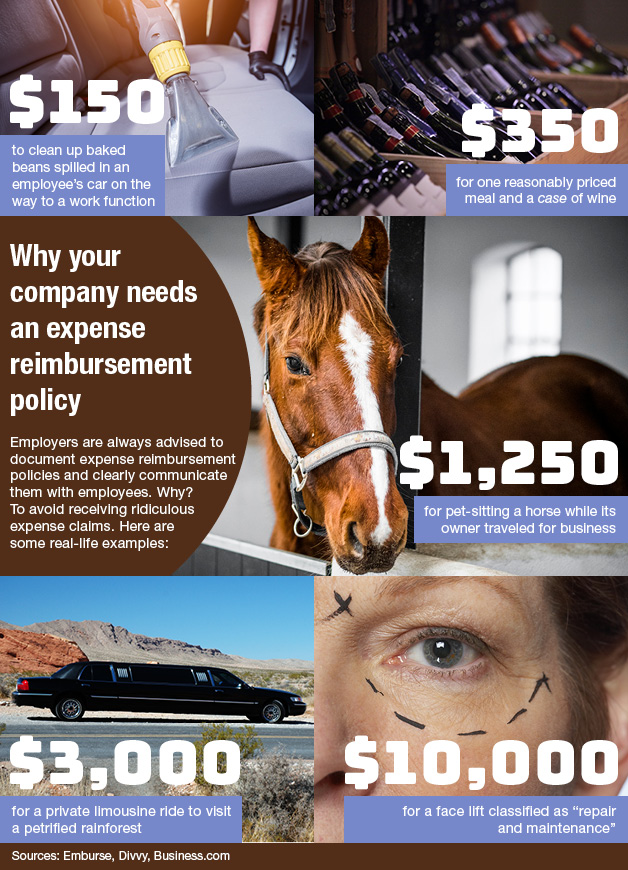
If your business doesn’t already have a retirement plan, now might be a good time to take the plunge. Current retirement plan rules allow for significant tax-deductible contributions.
For example, if you’re self-employed and set up a SEP-IRA, you can contribute up to 20% of your self-employment earnings, with a maximum contribution of $61,000 for 2022. If you’re employed by your own corporation, up to 25% of your salary can be contributed to your account, with a maximum contribution of $61,000. If you’re in the 32% federal income tax bracket, making a maximum contribution could cut what you owe Uncle Sam for 2022 by a whopping $19,520 (32% times $61,000).
More options
Other small business retirement plan options include:
- 401(k) plans, which can even be set up for just one person (also called solo 401(k)s),
- Defined benefit pension plans, and
- SIMPLE-IRAs.
Depending on your circumstances, these other types of plans may allow bigger deductible contributions.
Deadlines to establish and contribute
Thanks to a change made by the 2019 SECURE Act, tax-favored qualified employee retirement plans, except for SIMPLE-IRA plans, can now be adopted by the due date (including any extension) of the employer’s federal income tax return for the adoption year. The plan can then receive deductible employer contributions that are made by the due date (including any extension), and the employer can deduct those contributions on the return for the adoption year.
Important: The SECURE Act provision didn’t change the deadline to establish a SIMPLE-IRA plan. It remains October 1 of the year for which the plan is to take effect. Also, the SECURE Act change doesn’t override rules that require certain plan provisions to be in effect during the plan year, such as the provisions that cover employee elective deferral contributions (salary-reduction contributions) under a 401(k) plan. The plan must be in existence before such employee elective deferral contributions can be made.
For example, the deadline for the 2021 tax year for setting up a SEP-IRA for a sole proprietorship business that uses the calendar year for tax purposes is October 17, 2022, if you extend your 2021 tax return. The deadline for making the contribution for the 2021 tax year is also October 17, 2022. However, to make a SIMPLE-IRA contribution for the 2021 tax year, you must have set up the plan by October 1, 2021. So, it’s too late to set up a plan for last year.
While you can delay until next year establishing a tax-favored retirement plan for this year (except for a SIMPLE-IRA plan), why wait? Get it done this year as part of your tax planning and start saving for retirement. We can provide more information on small business retirement plan alternatives. Be aware that, if your business has employees, you may have to make contributions for them, too.
In today’s economy, many small businesses are strapped for cash. They may find it beneficial to barter or trade for goods and services instead of paying cash for them. Bartering is the oldest form of trade and the internet has made it easier to engage with other businesses. But if your business gets involved in bartering, be aware that the fair market value of goods that you receive in bartering is taxable income. And if you exchange services with another business, the transaction results in taxable income for both parties.
How it works
Here are some examples:
- A computer consultant agrees to exchange services with an advertising agency.
- A plumber does repair work for a dentist in exchange for dental services.
In these cases, both parties are taxed on the fair market value of the services received. This is the amount they would normally charge for the same services. If the parties agree to the value of the services in advance, that will be considered the fair market value unless there’s contrary evidence.
In addition, if services are exchanged for property, income is realized. For example,
- If a construction firm does work for a retail business in exchange for unsold inventory, it will have income equal to the fair market value of the inventory.
- If an architectural firm does work for a corporation in exchange for shares of the corporation’s stock, it will have income equal to the fair market value of the stock.
Barter clubs
Many businesses join barter clubs that facilitate barter exchanges. These clubs generally use a system of “credit units,” which are awarded to members who provide goods and services. The credits can be redeemed for goods and services from other members.
In general, bartering is taxable in the year it occurs. But if you participate in a barter club, you may be taxed on the value of credit units at the time they’re added to your account, even if you don’t redeem them for actual goods and services until a later year. For example, let’s say that you earn 2,500 credit units one year, and that each unit is redeemable for $2 in goods and services. In that year, you’ll have $5,000 of income. You won’t pay additional tax if you redeem the units the next year, since you’ve already been taxed once on that income.
If you join a barter club, you’ll be asked to provide your Social Security number or Employer Identification Number. You’ll also be asked to certify that you aren’t subject to backup withholding. Unless you make this certification, the club is required to withhold tax from your bartering income at a 24% rate.
Reporting to the IRS
By January 31 of each year, a barter club will send participants a Form 1099-B, “Proceeds from Broker and Barter Exchange Transactions,” which shows the value of cash, property, services and credits that you received from exchanges during the previous year. This information will also be reported to the IRS.
Conserve cash, reap benefits
By bartering, you can trade away excess inventory or provide services during slow times, all while hanging onto your cash. You may also find yourself bartering when a customer doesn’t have the money on hand to complete a transaction. As long as you’re aware of the federal and state tax consequences, these transactions can benefit all parties. If you need assistance or would like more information, contact us.
April 11, 2022
Employees – who work for tips. If you received $20 or more in tips during March, report them to your employer. You can use Form 4070.
April 18, 2022
Individuals – File an income tax return for 2021 (Form 1040 or Form 1040-SR) and pay any tax due. If you live in Maine or Massachusetts, you may file by April 19. If you want an automatic 6-month extension of time to file the return, file Form 4868, Application for Automatic Extension of Time To File U.S. Individual Income Tax Return and pay what you estimate you owe in tax to avoid penalties and interest. Then file Form 1040 or Form 1040-SR by October 17.
Household Employers – If you paid cash wages of $2,300 or more in 2021 to a household employee, file Schedule H (Form 1040 or Form 1040-SR) with your income tax return and report any employment taxes. Report any federal unemployment (FUTA) tax on Schedule H (Form 1040 or Form 1040-SR) if you paid total cash wages of $1,000 or more in any calendar quarter of 2020 or 2021 to household employees.
Employers – Social Security, Medicare, and withheld income tax. If the monthly deposit rule applies, deposit the tax for payments in March.
Employers – Nonpayroll withholding. If the monthly deposit rule applies, deposit the tax for payments in March.
Individuals – If you are not paying your 2022 income tax through withholding (or will not pay in enough tax during the year that way), pay the first installment of your 2022 estimated tax. Use Form 1040-ES.
Corporations – File a 2021 calendar year income tax return (Form 1120) and pay any tax due. If you want an automatic 6-month extension of time to file the return, file Form 7004 and deposit what you estimate you owe in taxes.
Corporations – Deposit the first installment of estimated income tax for 2022. A worksheet, Form 1120-W, is available to help you estimate your tax for the year.
The credit for increasing research activities, often referred to as the research and development (R&D) credit, is a valuable tax break available to eligible businesses. Claiming the credit involves complex calculations, which we can take care of for you. But in addition to the credit itself, be aware that the credit also has two features that are especially favorable to small businesses:
- Eligible small businesses ($50 million or less in gross receipts) may claim the credit against alternative minimum tax (AMT) liability.
- The credit can be used by certain even smaller startup businesses against the employer’s Social Security payroll tax liability.
Let’s take a look at the second feature. Subject to limits, you can elect to apply all or some of any research tax credit that you earn against your payroll taxes instead of your income tax. This payroll tax election may influence you to undertake or increase your research activities. On the other hand, if you’re engaged in — or are planning to undertake — research activities without regard to tax consequences, be aware that you could receive some tax relief.
Why the election is important
Many new businesses, even if they have some cash flow, or even net positive cash flow and/or a book profit, pay no income taxes and won’t for some time. Thus, there’s no amount against which business credits, including the research credit, can be applied. On the other hand, any wage-paying business, even a new one, has payroll tax liabilities. Therefore, the payroll tax election is an opportunity to get immediate use out of the research credits that you earn. Because every dollar of credit-eligible expenditure can result in as much as a 10-cent tax credit, that’s a big help in the start-up phase of a business — the time when help is most needed.
Eligible businesses
To qualify for the election a taxpayer must:
- Have gross receipts for the election year of less than $5 million and
- Be no more than five years past the period for which it had no receipts (the start-up period).
In making these determinations, the only gross receipts that an individual taxpayer takes into account are from the individual’s businesses. An individual’s salary, investment income or other income aren’t taken into account. Also, note that an entity or individual can’t make the election for more than six years in a row.
Limits on the election
The research credit for which the taxpayer makes the payroll tax election can be applied only against the Social Security portion of FICA taxes. It can’t be used to lower the employer’s lability for the “Medicare” portion of FICA taxes or any FICA taxes that the employer withholds and remits to the government on behalf of employees.
The amount of research credit for which the election can be made can’t annually exceed $250,000. Note, too, that an individual or C corporation can make the election only for those research credits which, in the absence of an election, would have to be carried forward. In other words, a C corporation can’t make the election for the research credit that the taxpayer can use to reduce current or past income tax liabilities.
The above are just the basics of the payroll tax election. Keep in mind that identifying and substantiating expenses eligible for the research credit itself is a complex area. Contact us about whether you can benefit from the payroll tax election and the research tax credit.
Do you want to withdraw cash from your closely held corporation at a minimum tax cost? The simplest way is to distribute cash as a dividend. However, a dividend distribution isn’t tax-efficient since it’s taxable to you to the extent of your corporation’s “earnings and profits.” It’s also not deductible by the corporation.
Five alternatives
Fortunately, there are several alternative methods that may allow you to withdraw cash from a corporation while avoiding dividend treatment. Here are five areas where you may want to take action:
1. Capital repayments. To the extent that you’ve capitalized the corporation with debt, including amounts you’ve advanced to the business, the corporation can repay the debt without the repayment being treated as a dividend. Additionally, interest paid on the debt can be deducted by the corporation. This assumes that the debt has been properly documented with terms that characterize debt and that the corporation doesn’t have an excessively high debt-to-equity ratio. If not, the debt repayment may be taxed as a dividend. If you make future cash contributions to the corporation, consider structuring them as debt to facilitate later withdrawals on a tax-advantaged basis.
2. Salary. Reasonable compensation that you (or family members) receive for services rendered to the corporation is deductible by the business. However, it’s also taxable to the recipient. The same rule applies to any compensation in the form of rent that you receive from the corporation for the use of property. In both cases, the amount of compensation must be reasonable in relation to the services rendered or the value of the property provided. If it’s excessive, the excess will be nondeductible and treated as a corporate distribution.
3. Loans. You may withdraw cash from the corporation tax-free by borrowing from it. However, to avoid having the loan characterized as a corporate distribution, it should be properly documented in a loan agreement or a note and be made on terms that are comparable to those on which an unrelated third party would lend money to you. This should include a provision for interest and principal. All interest and principal payments should be made when required under the loan terms. Also, consider the effect of the corporation’s receipt of interest income.
4. Fringe benefits. Consider obtaining the equivalent of a cash withdrawal in fringe benefits that are deductible by the corporation and not taxable to you. Examples are life insurance, certain medical benefits, disability insurance and dependent care. Most of these benefits are tax-free only if provided on a nondiscriminatory basis to other employees of the corporation. You can also establish a salary reduction plan that allows you (and other employees) to take a portion of your compensation as nontaxable benefits, rather than as taxable compensation.
5. Property sales. Another way to withdraw cash from the corporation is to sell property to it. However, certain sales should be avoided. For example, you shouldn’t sell property to a more than 50% owned corporation at a loss, since the loss will be disallowed. And you shouldn’t sell depreciable property to a more than 50% owned corporation at a gain, since the gain will be treated as ordinary income, rather than capital gain. A sale should be on terms that are comparable to those on which an unrelated third party would purchase the property. You may need to obtain an independent appraisal to establish the property’s value.
Keep taxes low
If you’re interested in discussing any of these approaches, contact us. We’ll help you get the most out of your corporation at the minimum tax cost.









